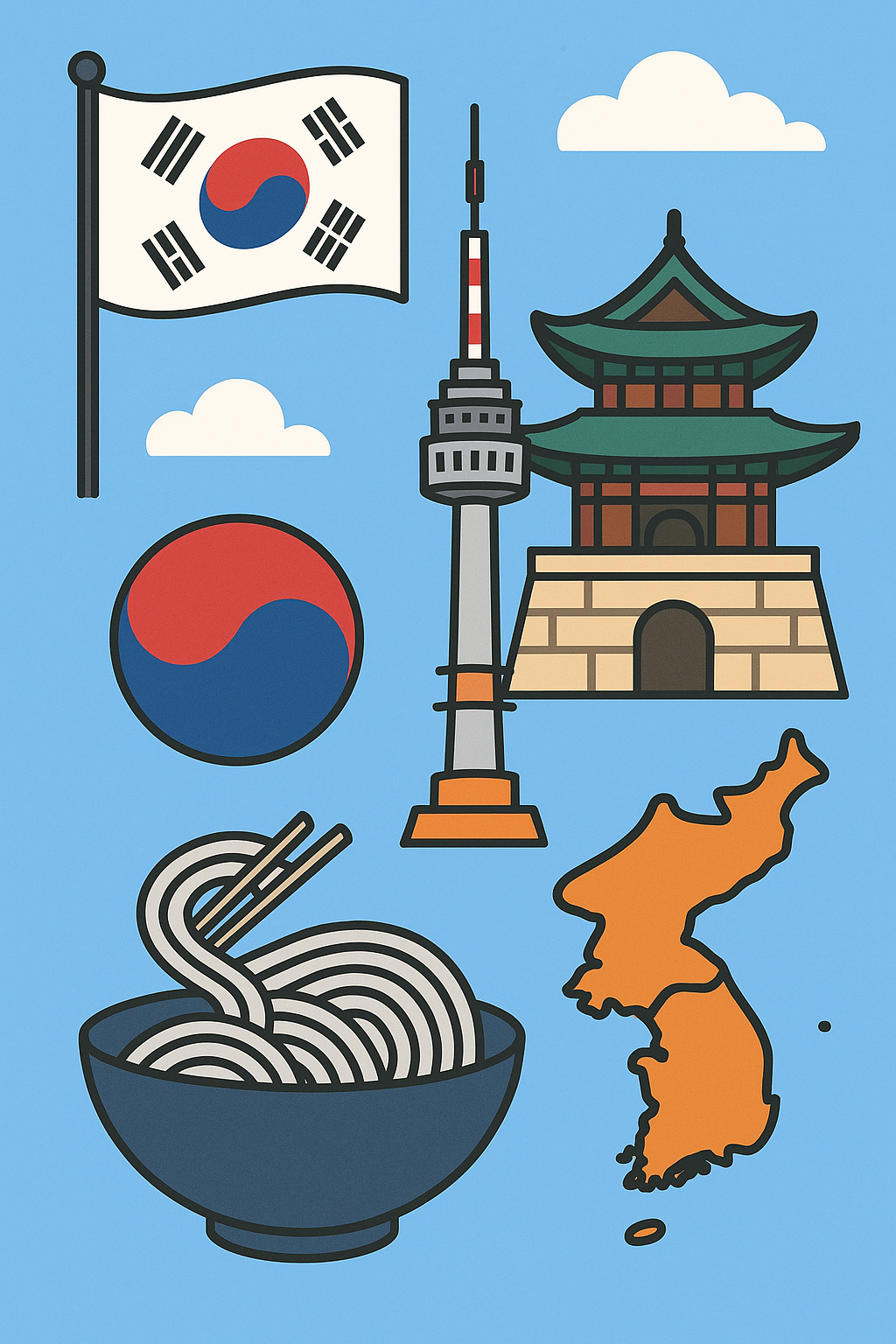2025. 6. 9. 08:00ㆍHow to Cook Korean Food

If you've ever visited Korea or a traditional Korean restaurant, chances are you've seen Japchae (Korean glass noodle stir-fry) — a glossy, colorful noodle dish. Frequently served at holidays, birthdays, or family gatherings, japchae is a staple of Korean cuisine. Why? Because the chewy texture of the sweet potato starch noodles, the vibrant medley of vegetables, and the savory-sweet seasoning make japchae the very definition of comforting Korean home cooking recipes.
In this post, written from the perspective of a native Korean food blogger, I’ll guide you through everything you need to know about japchae — from its background to a traditional recipe you can recreate at home using authentic Korean ingredients.
What Is Japchae?
Japchae (雜菜) literally means "mixed vegetables." But in modern Korean cuisine, it refers to a dish made primarily with dangmyeon (glass noodles made from sweet potato starch), stir-fried with a variety of vegetables and beef (optional), and seasoned with Korean soy sauce, sugar, sesame oil, and garlic.
It’s gluten-free Korean food, and can be served warm, at room temperature, or even cold — making it highly versatile and great for meal prepping.
Japchae is commonly served at:
- Birthday celebrations
- Korean New Year (Seollal)
- Ancestral rites (Jesa)
- Wedding banquets
Whether enjoyed on its own or with rice, japchae is a perfectly balanced traditional Korean noodle dish that is especially beloved by foreigners for its rich flavor and texture.

Key Ingredients for Japchae
Before we get into cooking, let's review the essential components for this authentic Korean japchae recipe:
- Glass noodles (dangmyeon): Made from sweet potato starch, these Korean noodles are translucent, chewy, and bouncy — much softer and stretchier than wheat-based noodles.
- Beef (optional): Thinly sliced sirloin or ribeye, briefly marinated with soy sauce, sugar, and garlic.
- Vegetables: Julienned carrot, spinach, onion, shiitake mushroom, and bell pepper are commonly used in Korean cuisine.
- Soy sauce and sugar: The sweet-savory base of japchae’s flavor.
- Garlic and sesame oil: Add fragrance and richness.
- Toasted sesame seeds: For a nutty finish and authentic presentation.

Traditional Japchae Recipe (Serves 4)
Ingredients:
- 200g glass noodles (dangmyeon)
- 100g beef (sirloin or ribeye)
- 1 carrot (julienned)
- 1/2 onion (thinly sliced)
- 1 red bell pepper (julienned)
- 4–5 dried shiitake mushrooms (soaked and sliced)
- 100g spinach (blanched and squeezed)
- 2 eggs (separated for garnish – optional)
- 3 tbsp soy sauce (divided)
- 1.5 tbsp sugar (divided)
- 1 tbsp sesame oil
- 1 tbsp minced garlic
- 1 tsp sesame seeds
- Salt, pepper, and a bit of cooking oil

Instructions:
1. Prepare the Ingredients
- Soak the noodles in lukewarm water for about 30 minutes, then drain.
- Marinate the beef with 1 tbsp soy sauce, 0.5 tbsp sugar, garlic, and pepper.
- Blanch spinach for 30 seconds, rinse in cold water, squeeze out excess moisture, and season lightly with salt and sesame oil.
- Slice all vegetables and mushrooms thinly.
2. Sauté Each Ingredient Separately
This traditional Korean cooking technique helps preserve each ingredient’s texture and color.
- In a lightly oiled pan, sauté carrots, onions, peppers, and mushrooms individually until just tender.
- Stir-fry the marinated beef over high heat until browned.
- (Optional) Make thin egg crepes with the yolks and whites separately. Slice into thin strips for garnish.
3. Boil and Season the Noodles
- Boil the soaked noodles for 6–7 minutes until soft but chewy. Rinse with cold water and drain.
- In a large bowl, mix noodles with 2 tbsp soy sauce, 1 tbsp sugar, sesame oil, and garlic. Toss thoroughly.
4. Assemble the Japchae
- In a large mixing bowl, combine all cooked vegetables, beef, and noodles.
- Using gloves, gently toss everything by hand — this ensures even seasoning throughout the Korean noodle stir-fry.
- Adjust seasoning with extra soy sauce or sesame oil as needed.
- Top with sesame seeds and egg strips.

Pro Tips for Perfect Japchae
- Don’t overcook the noodles: Overcooked noodles will ruin the texture.
- Balance the seasoning: Japchae should be sweet-savory, not too salty or sugary.
- Mix with your hands: This traditional method helps evenly absorb the flavors.
- Make ahead: Japchae tastes better after resting for a few hours as flavors develop.
Final Thoughts
It may look complicated at first, but once you master the preparation and order, japchae becomes surprisingly approachable. You can even adapt it to a vegetarian version by substituting meat with tofu or more mushrooms.
Whether for a Korean-themed dinner party or a weekday family meal, japchae offers a beautiful harmony of flavor, tradition, and care — all in one satisfying dish. It’s the perfect example of an easy Korean dish that’s healthy, colorful, and deeply satisfying.
If you give it a try, leave a comment to share your experience. And don’t forget to enjoy it with a side of Korean kimchi!
Keywords: Korean japchae recipe, glass noodle stir-fry, traditional Korean food, sweet potato noodles, easy Korean recipes, how to make japchae, gluten-free Korean dish, Korean party food, Korean noodle dish, authentic japchae instructions
